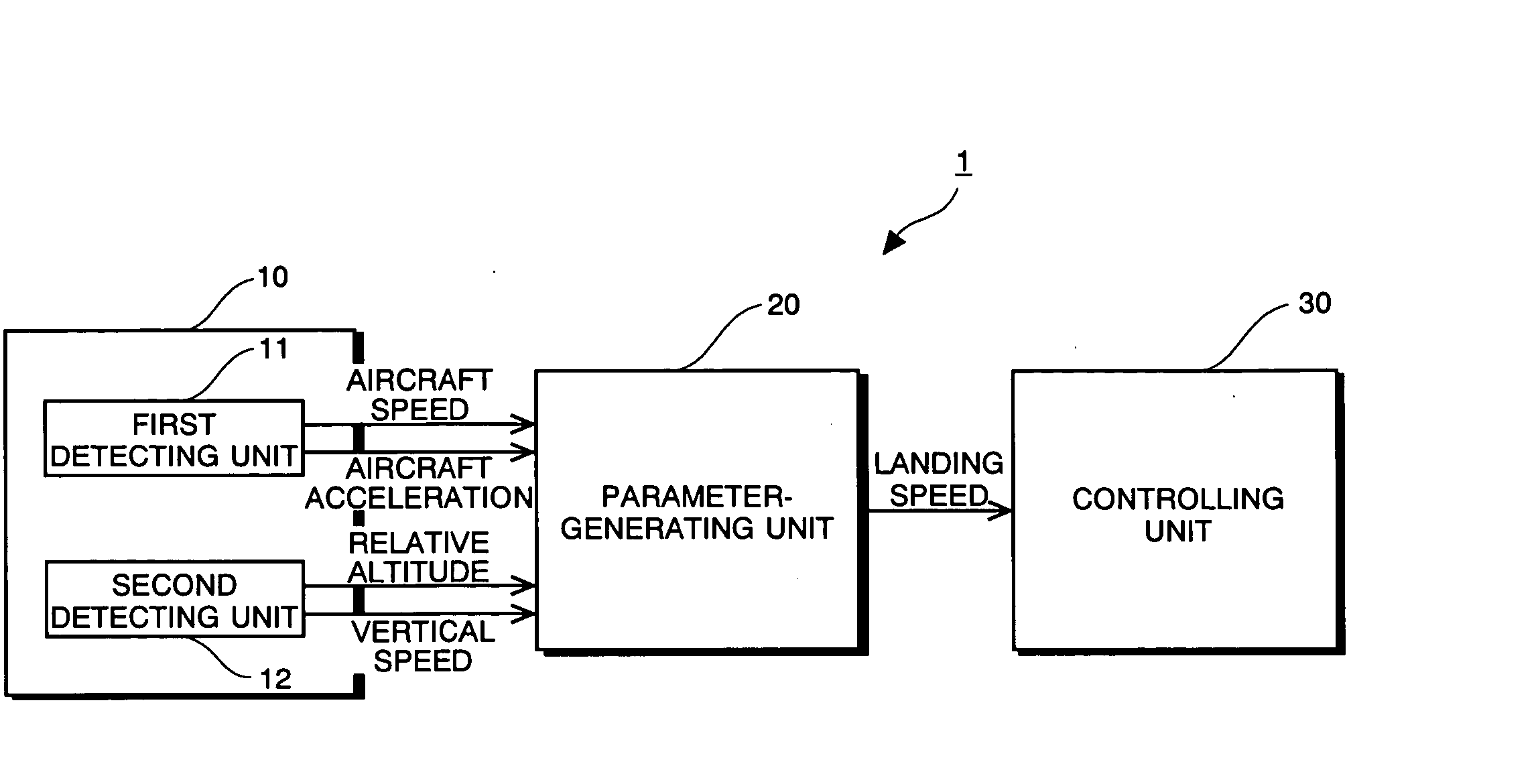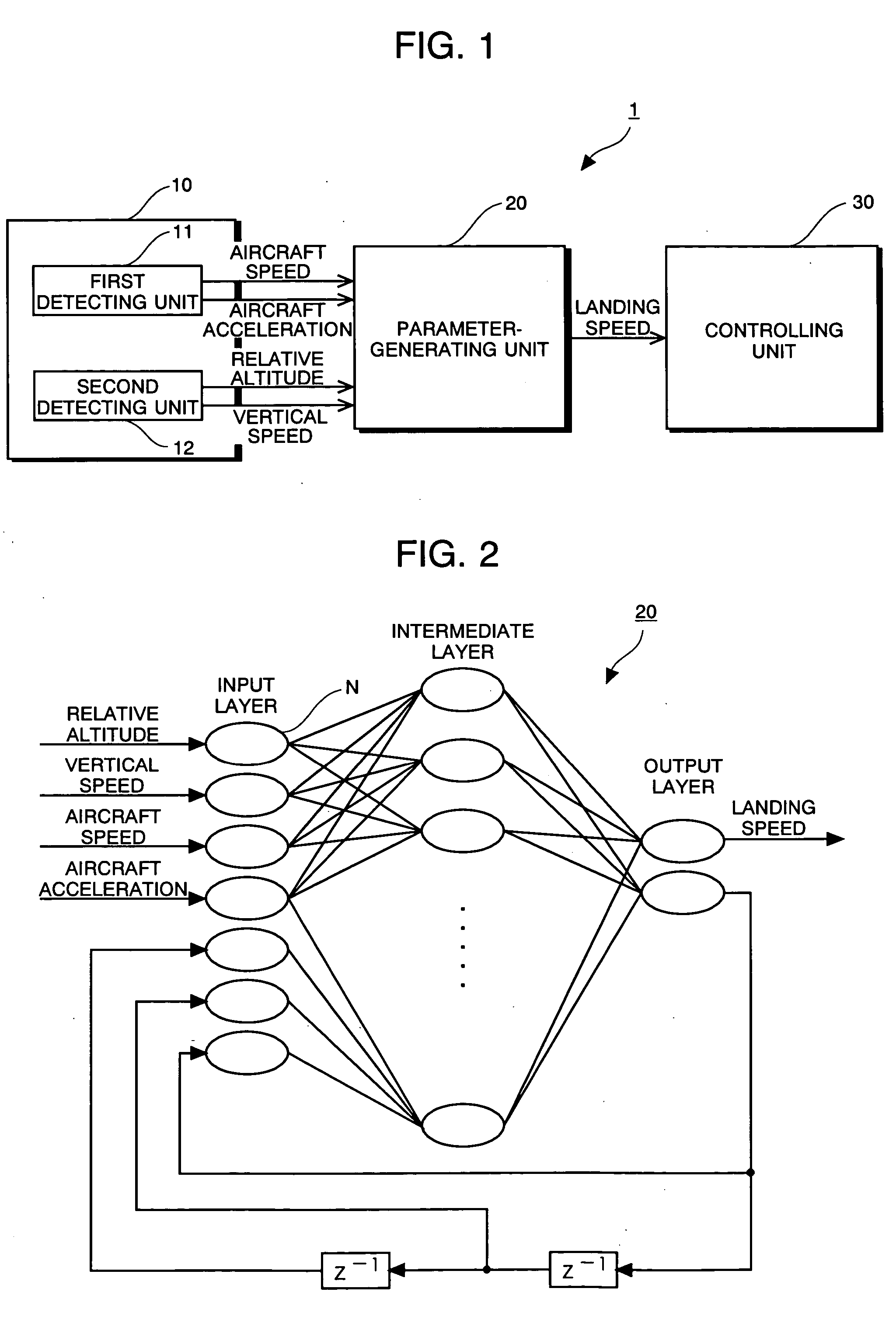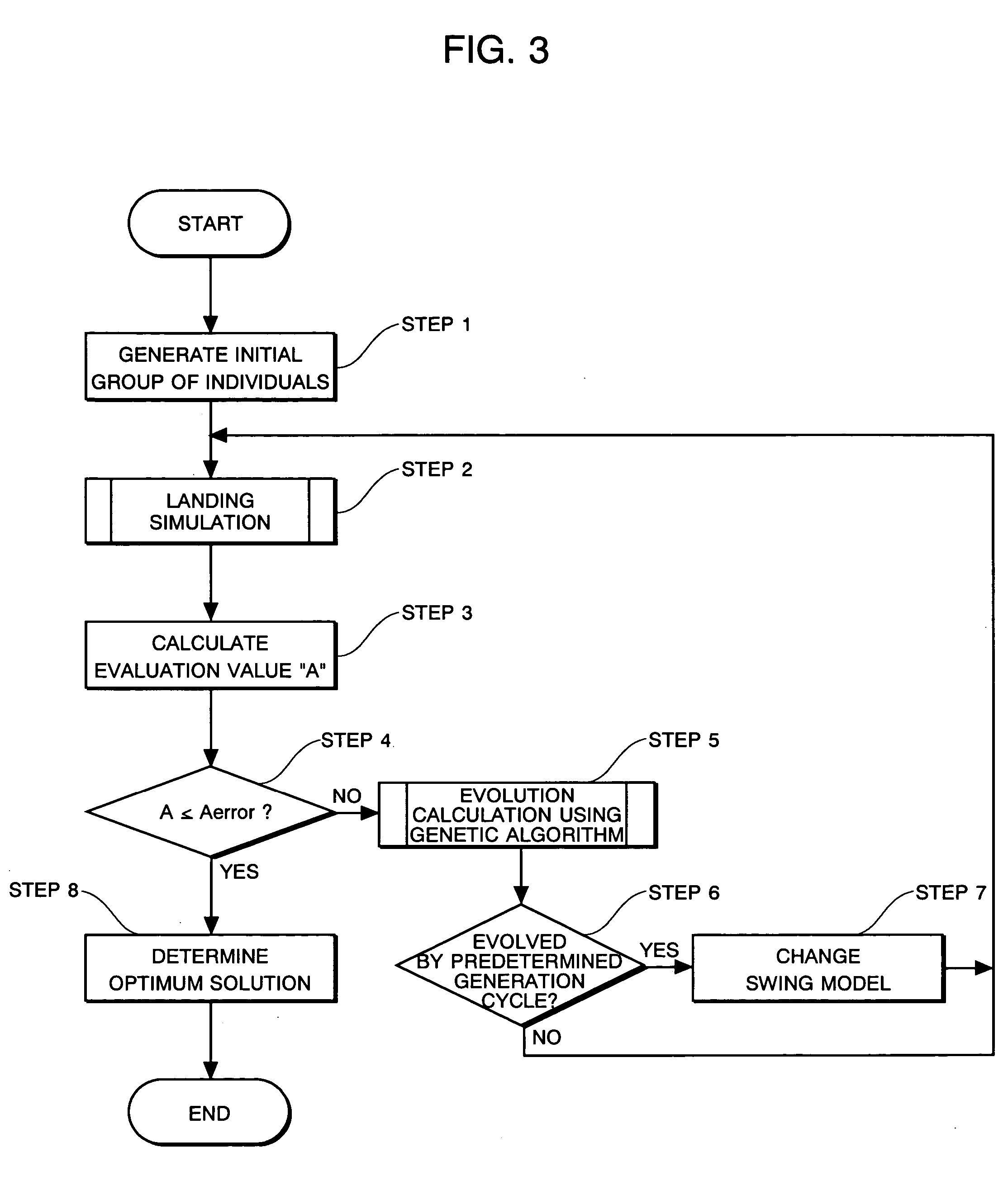Landing-control device and landing-control method for aircraft
a technology for landing control and aircraft, which is applied in adaptive control, navigation instruments, instruments, etc., can solve the problems of damage to the body of the aircraft, difficulty in performing automation of control, and difficulty in speed control of the aircraft in the vertical direction,
- Summary
- Abstract
- Description
- Claims
- Application Information
AI Technical Summary
Problems solved by technology
Method used
Image
Examples
Embodiment Construction
[0022]FIG. 1 is a block diagram showing the construction of a landing-control device for an aircraft according to a present embodiment. The landing-control device 1 is installed in a vertical takeoff and landing aircraft (hereinafter referred to as an “aircraft”) such as a helicopter or the like, and carries out the speed control of the aircraft in the vertical direction during landing. The landing-control device 1 comprises a detecting unit 10, a parameter-generating unit 20 and a controlling unit 30.
[0023] The detecting unit 10 comprises a first detecting unit 11 for detecting a condition of an aircraft and a second detecting unit 12 for detecting the relative relationship between the aircraft and a landing surface. For example, an accelerometer is used as the first detecting unit 11, and an acceleration of the aircraft in the horizontal direction (hereinafter referred to as an “aircraft acceleration”) is detected by the first detecting unit 11. Furthermore, the first detecting u...
PUM
 Login to View More
Login to View More Abstract
Description
Claims
Application Information
 Login to View More
Login to View More - R&D
- Intellectual Property
- Life Sciences
- Materials
- Tech Scout
- Unparalleled Data Quality
- Higher Quality Content
- 60% Fewer Hallucinations
Browse by: Latest US Patents, China's latest patents, Technical Efficacy Thesaurus, Application Domain, Technology Topic, Popular Technical Reports.
© 2025 PatSnap. All rights reserved.Legal|Privacy policy|Modern Slavery Act Transparency Statement|Sitemap|About US| Contact US: help@patsnap.com



